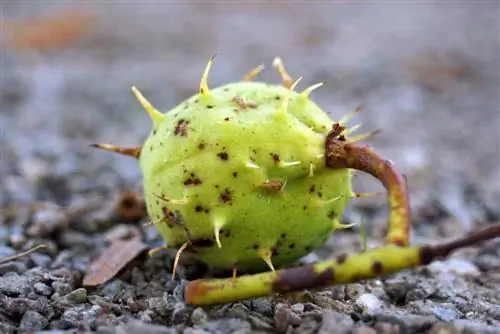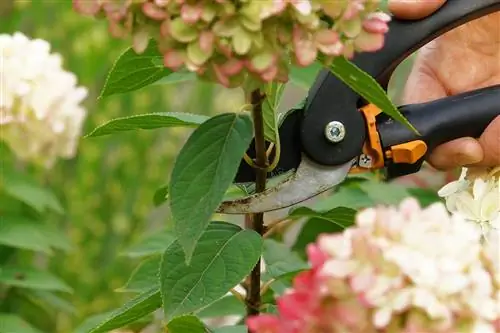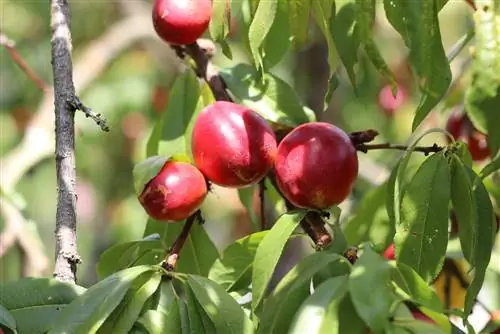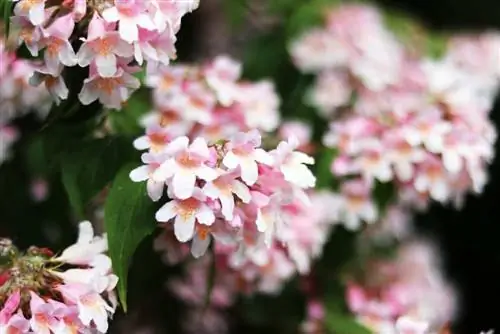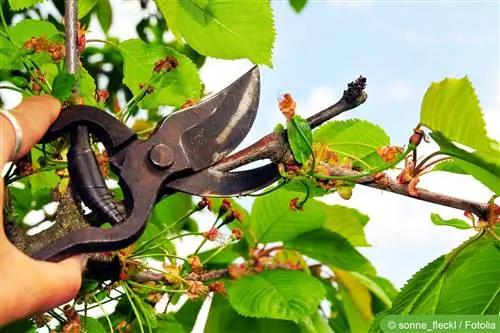- Author admin [email protected].
- Public 2023-12-17 03:39.
- Last modified 2025-06-01 06:48.
The best time of year to prune a chestnut is during the cooler months, from early November to early March. It should be cool outside, but free of frost. At temperatures below zero, frostbite would occur at the interfaces and damage the tree. When outside temperatures are above four degrees, the conditions for a fungal disease are ideal. Fungal spores penetrate the wood through the fresh interfaces and can cause serious damage to the tree in the long term.
When is the best time to prune a chestnut tree?
The chestnut is one of the trees that has difficulty warding off invading germs. Have your chestnut tree trimmed by a professional. He knows how sensitive the chestnut tree reacts to cutting measures and acts accordingly.
Types of pruning
- When can a chestnut be cut? -
It's best to start pruning a chestnut tree when it's young. From the second year of life onwards, the framework of the young tree can be slowly built up with regular pruning. Now the branches that need to be removed still have a small diameter, which means the cuts in the wood are also small and offer little attack surface for fungal spores and other germs. If you also pay attention to the right time of year for a cut, the wounds on the tree will dry quickly and will not become infected with bacteria or fungi. If a stable tree framework has been achieved after a few years, it is sufficient to carry out the cutting measures within a longer period of time.
Tip:
Only cut branches that are about 5 cm in diameter. The tree closes the small wounds relatively quickly. Seal the edges of large cut areas with an appropriate wound treatment, such as: B. tree resin. Because of its soft wood, the chestnut finds it difficult to form a protective zone around the wound. Fungi and bacteria are therefore only inadequately defended against.
The upbringing cut
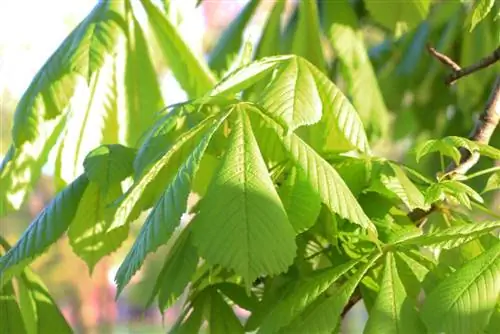
The chestnut tree needs regular pruning in the first 2 to 5 years. This is very important for the strong growth of the tree and should be carried out once or twice a year. The right time for this is of course the cool season again. With this cut you select a strong, upward-growing shoot that should develop into a strong trunk over the next few years. Cut all other competing branches cleanly at the base and seal the edges of any large wounds with tree resin or something similar. Small cut surfaces dry in the air.
The Glade Cut
If the chestnut tree has developed a stable tree structure after a few years and has achieved the desired shape, a clearing cut is sufficient for further care. Diseased and dead twigs and branches are removed. The cut is made directly on the trunk. Branches that disrupt the regular growth of the tree, such as branches growing inwards and branches that hinder each other's growth, are also cut directly on the trunk. The clearing cut makes room for new growth. If the chestnut tree has already been guided into the correct growth path with training cuts, clearing cuts are only necessary at long intervals. The older the chestnut tree gets, the less it is cut.
Note:
Thick branches (thicker than 5 cm in diameter) should only be cut in autumn unless they are affected by a disease.
The Purge
Up to the age of twenty, the chestnut tree needs a pruning approximately every two to three years. During the undisturbed growth period, the tree has formed many thin, upward-growing shoots, the so-called water shoots. On the trunk itself, side shoots are annoying and thin shoots, the cane rashes, also sprout from the root area, the base. All of these unwanted rashes are radically removed during the cleaning cut, i.e. right down to the old wood. Widely spreading side branches and high, unstable trunk axes must be shortened.
The trunk itself is cleaned and examined for diseased areas. Cut out diseased parts and dead wood down to the he althy wood and close the wound if necessary. If pests have nested in knotholes or under the bark, these areas must also be removed.
Note:
Chestnut canker develops on the bark of damaged wood and must be rigorously removed to prevent it from spreading.
The crown cut
The crown of a chestnut tree also needs regular pruning in its first twenty years of life. Once a strong tree framework is in place, only cleaning cuts are required. If you want to trim the crown properly, shorten its weak branches significantly. Weak side branches and vertical shoots are also trimmed or cut off completely, as they unnecessarily deprive the tree of strength. Crown pruning stabilizes the tree and gives an older chestnut the strength to grow new branches.
How should the cut be done step by step?
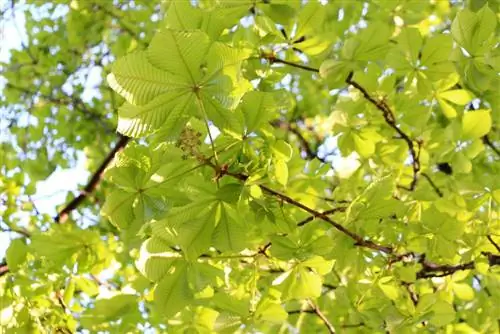
When it's time to cut your chestnut tree again, start with a cleaning cut. First, remove all dead wood and cut diseased branches back to he althy wood. Then shorten excessive trunk axes and side branches that are too long, and eliminate water veins and side shoots. As a final measure, you can cut the crown. Here you cut off weak branches and shorten shoots that are too long. If you correct all branches and crown parts in this way, the tree can develop a strong tree structure in the next few years.
Tip:
Especially when you cut the crown, there are a lot of cuts on the tree. Since the chestnut tree reacts very sensitively to injuries, all large wounds in the edge area should be closed with a wound resin or an appropriate ointment in order to prevent infections with fungi or bacteria from the outset.
What mistakes should you avoid?
Before you prune your chestnut tree, you should definitely find out when the best time to do it is. Above all, suitable outside temperatures are important. If branches need to be cut off completely, place the scissors directly on the trunk. But be careful not to damage the trunk wood. Do not leave any branch stubs, the so-called coat hooks.
Don't wait too long to cut the chestnut for the first time. Only at a young age can you develop the foundation for a he althy and strong tree structure. Regular cutting ensures good growth.
Use wound resin sparingly and only for large wounds in the wood. Moisture and warmth create ideal conditions for fungal growth underneath the wound balm. Feel free to let cleanly cut small wounds dry in the fresh air. Large cut surfaces are only coated on the outer edge, where the bark and wood come together. This is where the sensitive cambium layer is located, where the cells responsible for tree growth divide.
Cut correctly with the ideal cutting tool
You can only cut correctly with high-quality tools. Cut branches with appropriate pruning shears. A telescopic extension makes work easier here. A tree saw may need to be used when cutting the crown.
If you are planning a grooming cut, check whether all blades are sharp enough. Only with sharp blades can you achieve a clean cut and the cut surfaces can heal well. If necessary, the scissors must be sharpened and dull saw blades replaced.
Tip:
Many garden centers have departments where your cutting tools can be professionally sharpened.
Shortly before you start working, clean your tool with dishwashing water. The blades must then be thoroughly disinfected with alcohol so that no germs can penetrate the fresh cut surface.
Should you cut off spent flowers?

When the chestnut blooms, it impresses with beautiful white candles for a few days. As soon as they have faded, the chestnuts develop. The fruits provide a source of food for many animals in winter and the children collect them for crafts. You should therefore not remove faded chestnut flowers. Blossoms that do not produce chestnuts dry up and fall from the tree on their own.

